Please see our New Mexico photo gallery.
The last stop on our RoadScholar tour of Albuquerque, Taos and Santa Fe was another kiva – this one at Coronado Historic Site in the Albuquerque suburb of Bernalillo. A kiva is a sacred room within an Indian pueblo, where religious rites are performed. This visit required climbing up one ladder and down another one into the underground chamber; only 13 of us at a time. The room included reproductions of pre-Columbian murals that were discovered along with the remains of the pueblo.
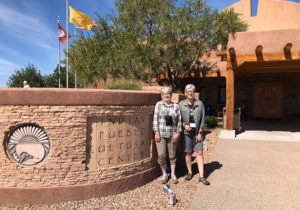
Sue and Lee Ann at one of many museums during the tour.
Unlike the many other remote historic and sacred sites we had visited this one was surrounded by a golf course and a lot of suburban traffic. We had had a big lunch, we were tired, we were hot, we were thirsty. In short, we were kiva’d out.
This trip to New Mexico was our first RoadScholar trip and second bus tour. This tour is a popular one, and there were 34 members of our group. You could see looks of horror on customers’ faces as our bus pulled up to a small, rural restaurant – although the staffs were used to the onslaught and handled it efficiently.
RoadScholar is geared toward “lifelong learners,” and we first encountered them at our hotel near Bryce Canyon in 2017. They were a friendly bunch and they were learning all about the geology of the Colorado Plateau from a female tour director/professor. We later learned that RoadScholar has hundreds of trips – no frills but a good value and very educational.
The whole cultural enchilada
New Mexico has a history that is unique among the 50 states. The Pueblo Indians migrated from the Mesa Verde region of southern Utah and Colorado in the 13th century; there also were Navajos and Apaches; the conquistadores came in the 1500s, followed by the Franciscans, and much later the Anglos. The Spaniards and the friars tried to forcibly convert and enslave the Puebloans, who collectively rebelled in 1680 and drove the Spaniards back to Mexico for 12 years. Eventually, the native Americans (they actually seem to prefer “Indian”) learned to accommodate Catholicism while still practicing their own religion clandestinely. Even today, they are very secretive about their religious rites.
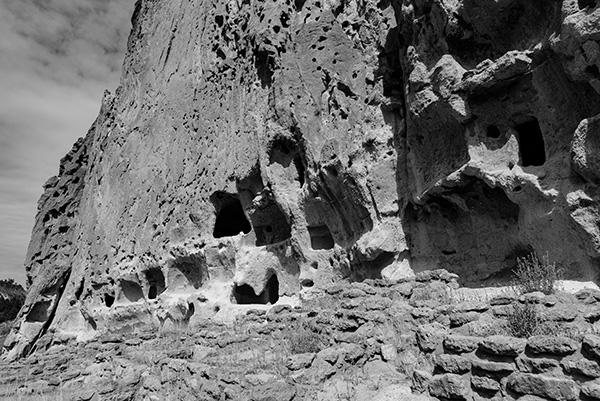
Caves once inhabited by Pueblo Indians at Bandelier National Monument.
A highlight was a family-style lunch at Tesuque Pueblo, hosted in the home of Louie Hena, an activist in the field of revitalizing traditional Pueblo agriculture and protecting indigenous food and seed sovereignty. Everything we ate was produced within the pueblo – potato salad, iced tea, chicken and meat enchiladas, beans, corn, squash – even the bread pudding. We were not permitted to take pictures there.
We visited several museums, including the Indian Pueblo Cultural Center and the New Mexico Museum of Natural History and Science in Albuquerque; the Bradbury Science Museum and the Los Alamos History Museum in Los Alamos, where thousands of scientists converged on a converted boys; camp to build an atomic bomb in a big hurry; and the Museum of Indian Arts and Culture and Museum of International Folk Art in Santa Fe. We are not really museum people, so others in the group visited even more museums.
We saw a scurrying tarantula and visited pueblo ruins inside caves at Bandelier National Monument, a striking intersection of volcanic rock and pure blue sky; the Taos Pueblo, a UNESCO World Heritage Site that has been continuously inhabited for more than 1,000 years; and a variety of pueblo and village churches, including the pilgrimage site, Santuario de Chimayo.
Strolling through Santa Fe
Our impressions of the towns: We both liked Santa Fe the best, despite the Rodeo Drive vibe and outrageous prices; it was fun to window shop, and I bought a native flute from Sky Redhawk at his Native Sounds store near the Loreto Chapel. We had a melt-in-your-mouth elk tenderloin dinner at the Coyote Cafe for Sue’s birthday.
Taos, except for the pueblo, was a bit of a disappointment as I did not sense the artistic aura I was expecting (maybe because I am not really an artist) after reading Edge of Taos Desert by Mabel Dodge Luhan. Los Alamos was fascinating to me because I had read the book 109 East Palace in preparation. Friendly Albuquerque did not seem like a city of almost 600,000 people (1 million metro area), and its Old Town area was charming with lots of shops and restaurants.
I am signing up for what I hope will be a smaller group in 2019 – hiking around the Lake Powell area in Utah and Arizona. The size of the group was probably the one drawback – that is a lot of older tourists who regularly have to pee (I include myself). As I had prepped by reading several books about the history of New Mexico and its peoples and cultures, I enjoyed the enhanced educational aspect of the tour. If you like a steady dose of learning while on vacation with a well traveled and seasoned group, we would recommend a tour like this.

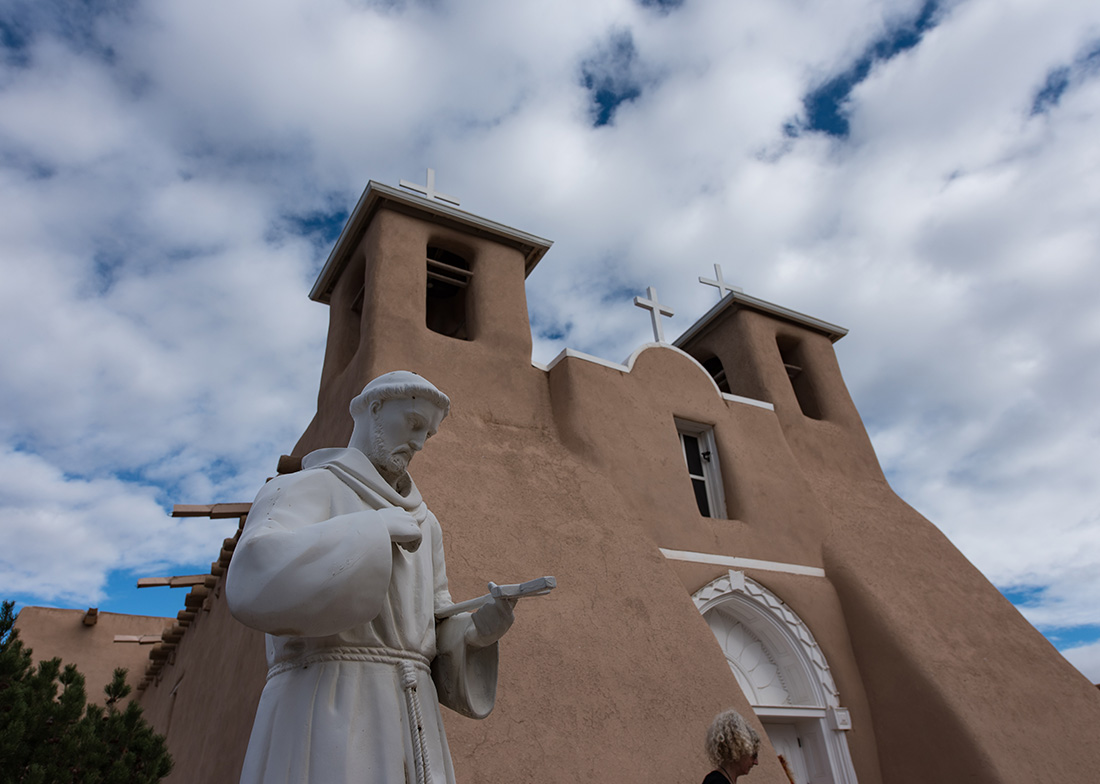
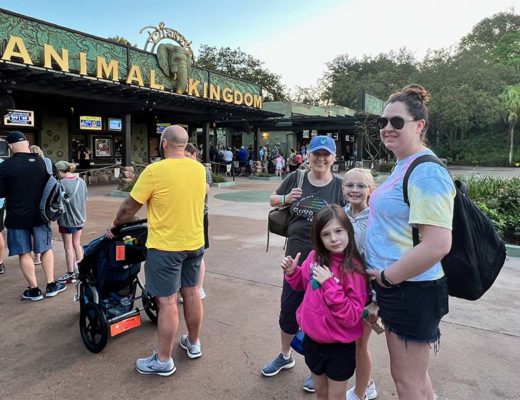
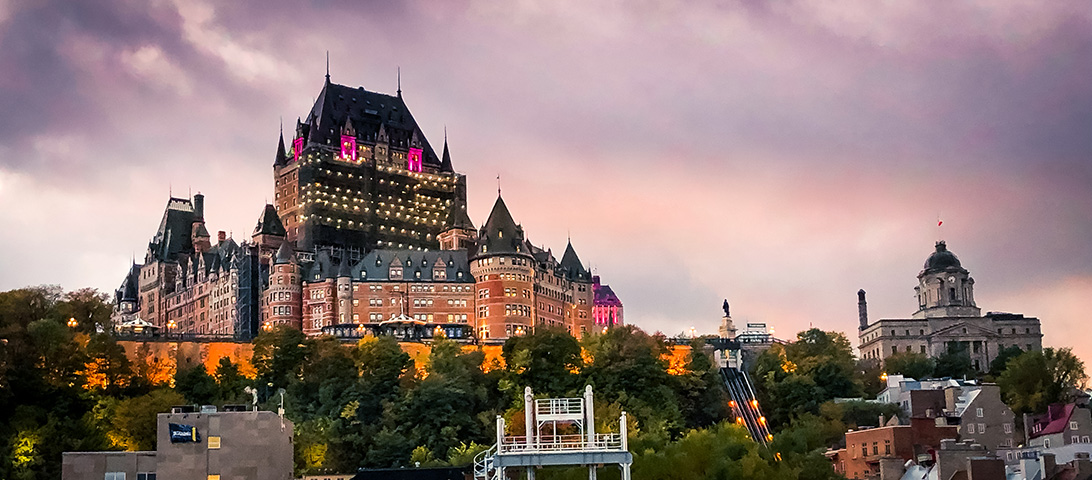
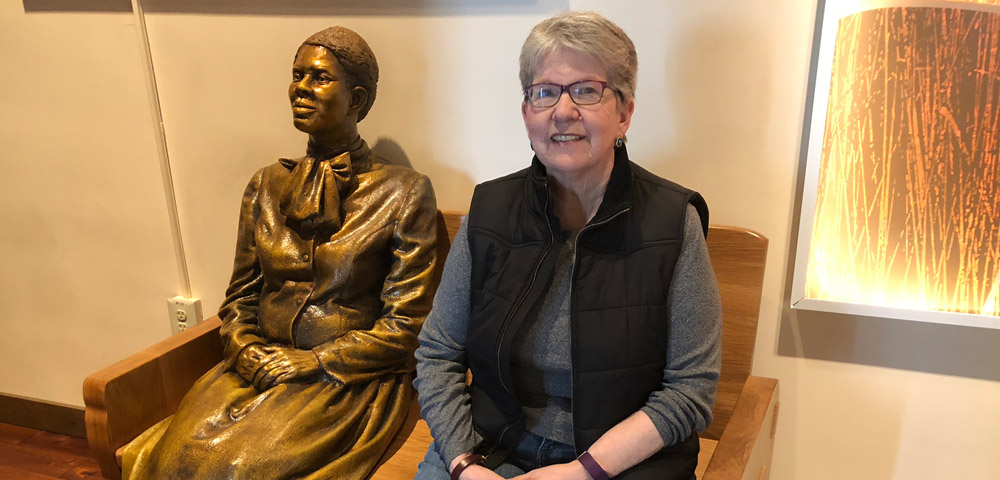
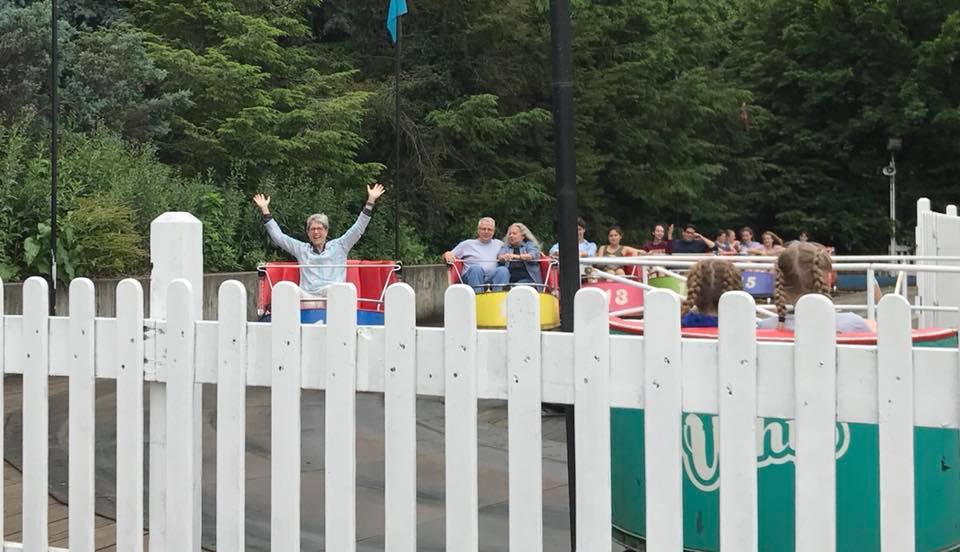

No Comments